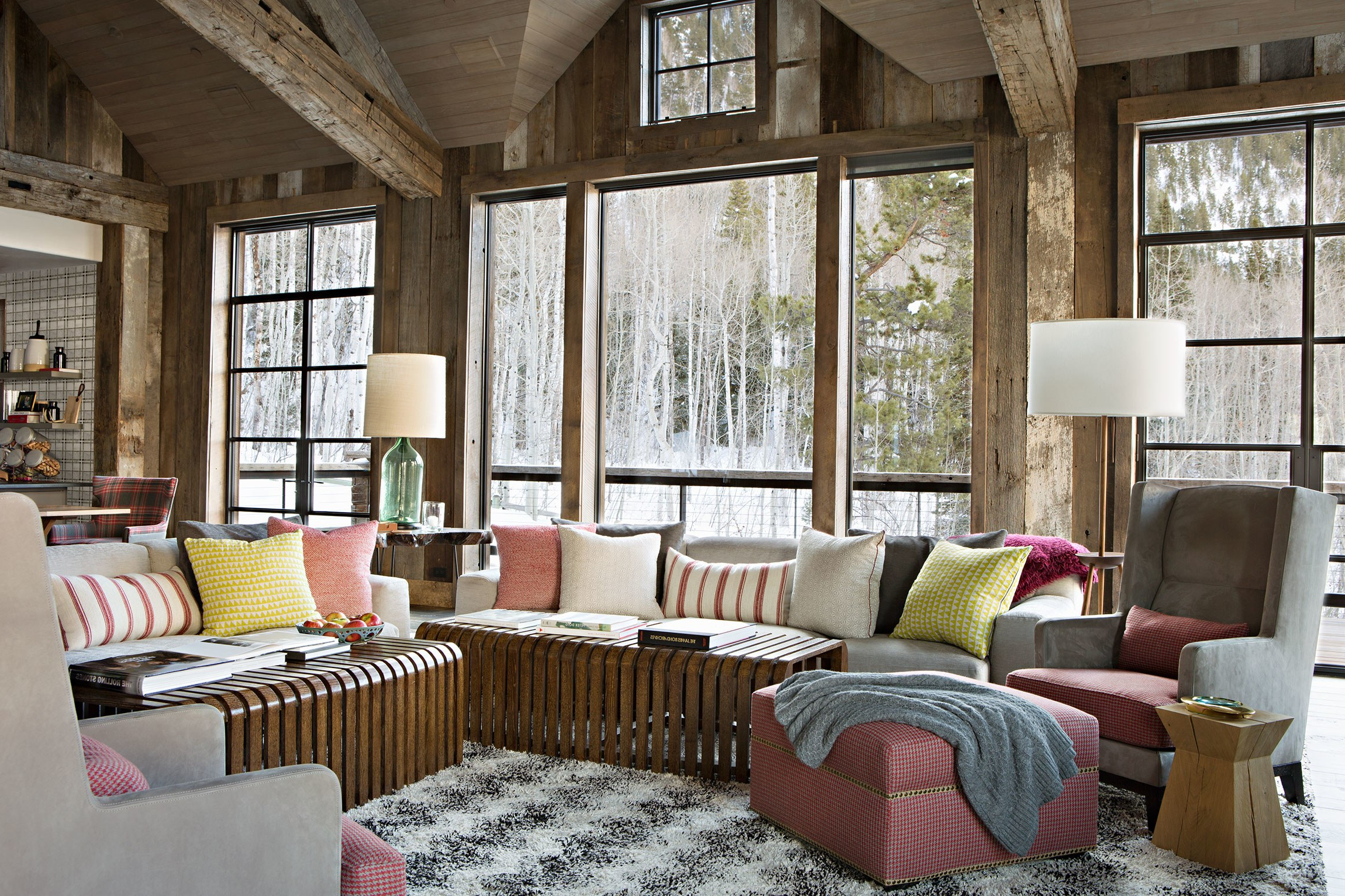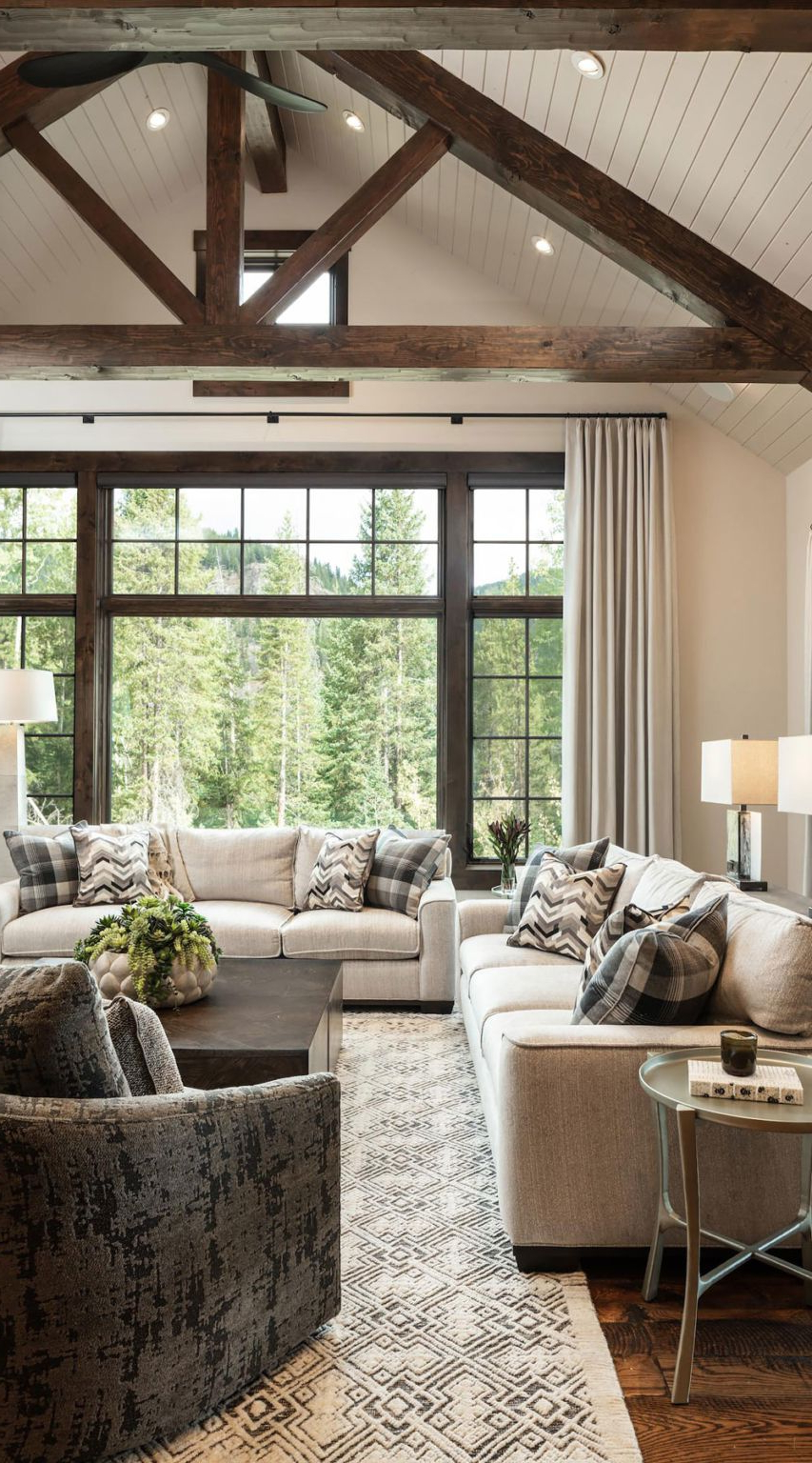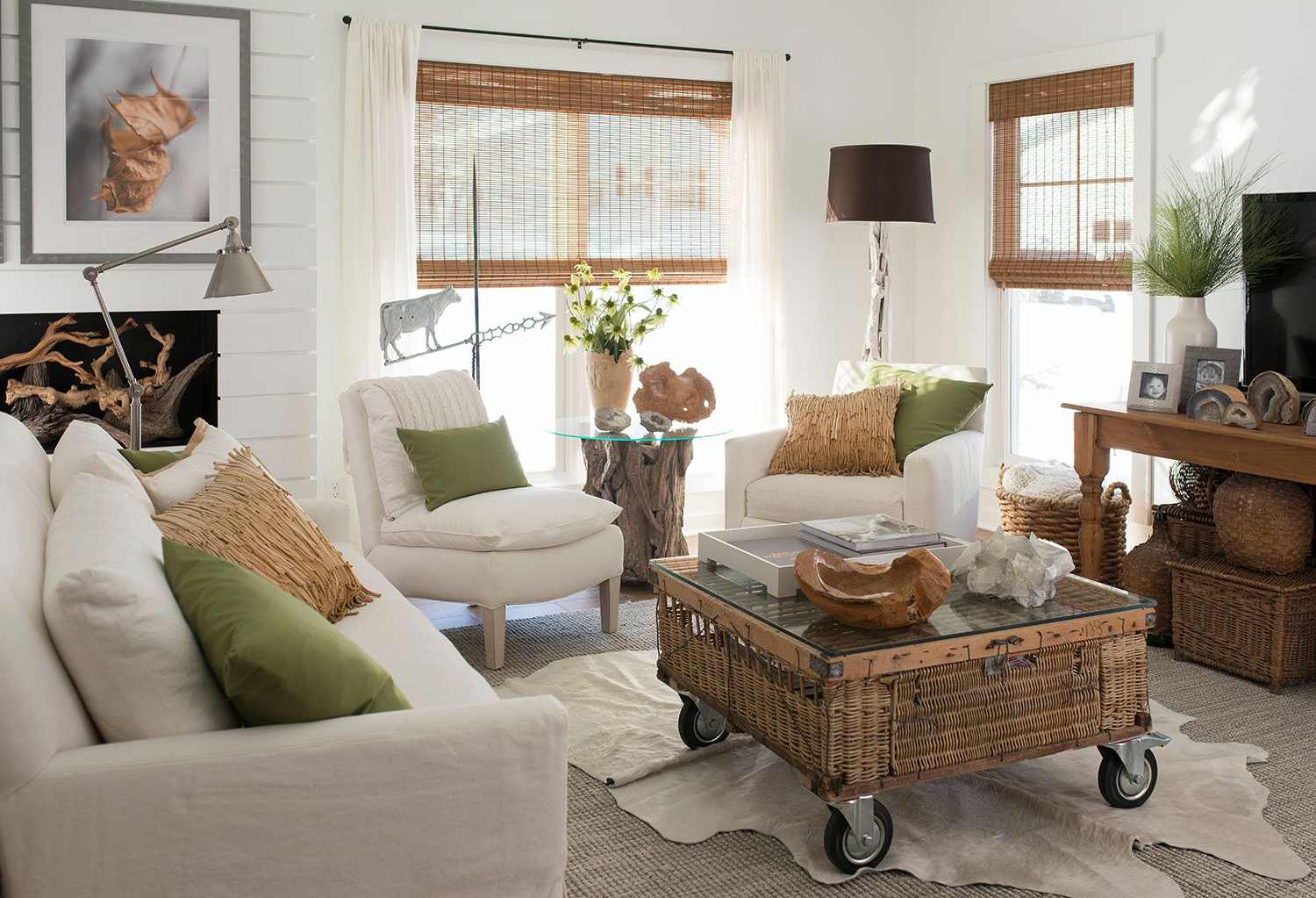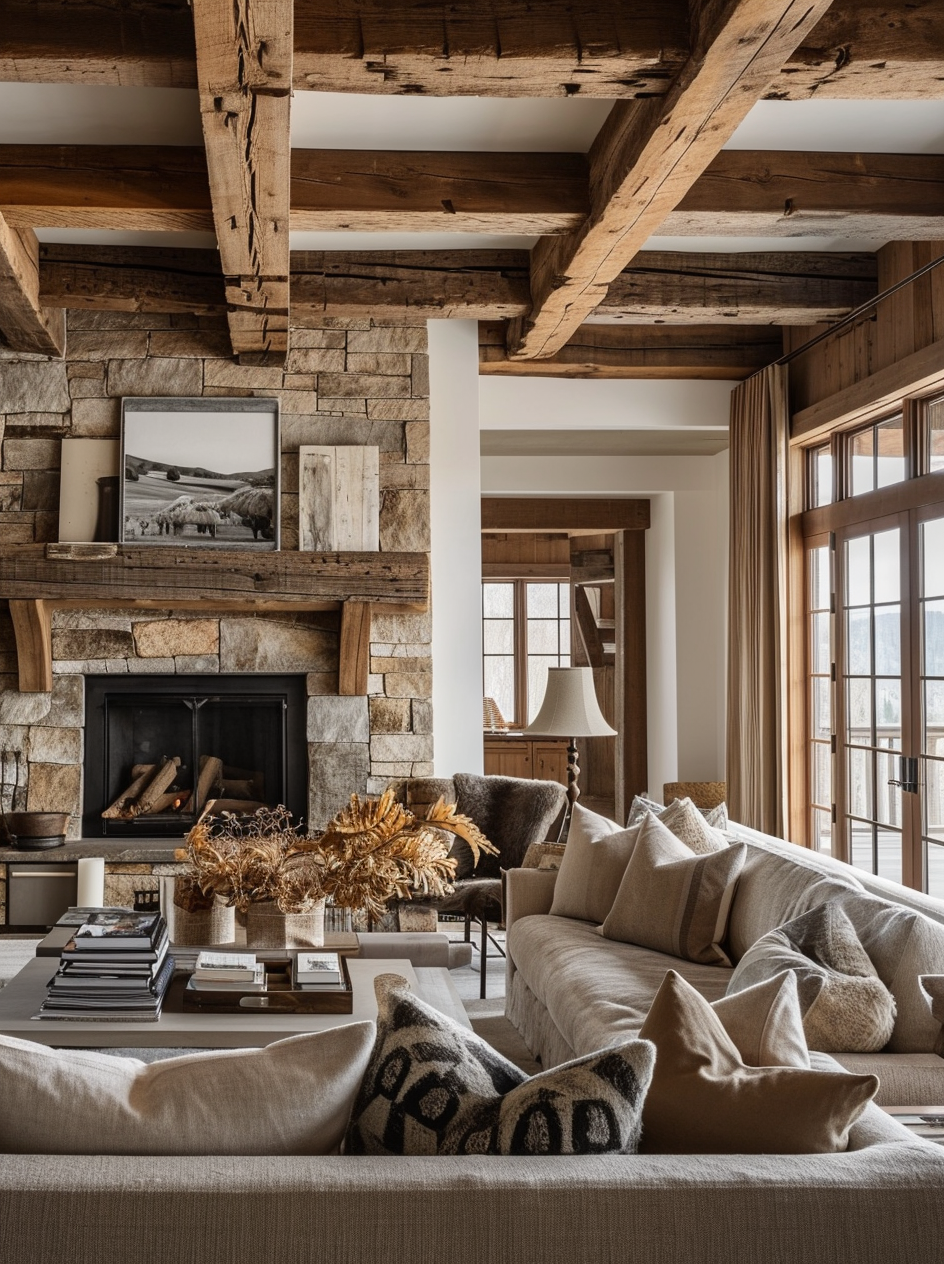Picture this: a cozy living room where weathered wooden beams meet sleek contemporary furniture, where exposed brick walls whisper stories of the past while smart technology keeps everything connected. This isn’t just a dream – it’s the reality of modern rustic living room concepts that are transforming homes across the country. These spaces don’t just look good; they feel like a warm embrace after a long day.
The appeal of modern rustic living rooms lies in their ability to create spaces that feel both grounded and forward-thinking. It’s a design philosophy that celebrates the beauty of imperfection while embracing the comfort of today’s lifestyle. Whether you’re renovating your entire home or simply looking to refresh your living space, understanding these concepts can help you create a room that feels authentically yours. The magic happens when you balance the raw elements of rustic design with the clean lines and functionality that define contemporary living.
Understanding the Core Elements
At its heart, modern rustic design combines natural materials with minimalist aesthetics. Think reclaimed wood, stone, and metal paired with clean architectural lines. The key is finding that perfect balance between rough and refined. You might see a large stone fireplace surrounded by simple, unadorned cabinetry, or exposed wooden beams that frame a sleek sectional sofa. The beauty lies in how these contrasting elements complement each other rather than compete. Natural textures play a huge role – think soft wool throws, linen curtains, and leather accents that add warmth to otherwise stark surfaces. What makes this style so appealing is how it brings a sense of calm and authenticity to our increasingly digital lives.
Color Palette Essentials
The color scheme in modern rustic spaces typically leans toward earth tones and neutral palettes. Think warm browns, rich oranges, deep greens, and muted grays that echo the natural world around us. These colors work together to create a sense of unity and harmony throughout the room. A deep forest green sofa can anchor a space beautifully, while cream or beige walls provide the perfect backdrop for all the interesting textures and materials. Sometimes, a single bold accent color – perhaps a rich burgundy or deep navy – can make a statement without overwhelming the overall aesthetic. The trick is using these colors thoughtfully, ensuring they enhance rather than distract from the natural elements that define the style.
Key Furniture Selection
Choosing the right furniture is crucial to achieving that modern rustic look. Opt for pieces that have character but aren’t overly ornate. A distressed wooden coffee table with clean lines works perfectly, as does a simple metal and wood chair that looks like it could have been crafted by hand. The focus should always be on quality over quantity. One well-chosen statement piece often speaks louder than several smaller items. Consider a vintage-inspired armchair with a modern frame, or a contemporary sofa with natural fiber cushions. Remember, the furniture should feel lived-in rather than museum-perfect. It’s about creating a space that feels comfortable enough for daily life, not just for show.
Lighting That Sets the Mood
Proper lighting can truly make or break a modern rustic interior, defining whether the space feels inviting and cohesive or cold and disjointed. In this style, light isn’t just functional it’s part of the design language that enhances textures, highlights materials, and sets the tone for the entire room. A balanced blend of ambient, task, and accent lighting is essential to create depth, warmth, and visual interest. Ambient lighting forms the foundation think soft overhead fixtures, rustic chandeliers, or recessed lights that provide even illumination. Task lighting, such as reading lamps, pendant lights over kitchen islands, or wall-mounted sconces near desks, ensures practicality where focused light is needed. Accent lighting then ties everything together, emphasizing architectural details like exposed beams, stone walls, or reclaimed wood features that define the modern rustic aesthetic.
When it comes to fixtures, materials matter just as much as light quality. Choose lighting elements that echo the natural, organic feel of the room. Pendant lights crafted from aged metal, iron, or wood bring a handcrafted, timeless quality. Table and floor lamps with rattan, linen, or burlap shades diffuse light beautifully, casting a gentle, welcoming glow that complements raw materials such as stone and timber. For an added layer of charm, string lights or fairy lights can introduce a whimsical, cozy touch perfect for wrapping around a mantel, draping over a headboard, or accenting an outdoor patio. These subtle details make the space feel lived-in and effortlessly warm.
Equally important is the tone and temperature of the light. Warm lighting (around 2700K–3000K) enhances the earthy tones and textures of a rustic palette, while cooler white light can appear too harsh and detract from the natural feel. Consider using dimmer switches to adjust brightness levels based on time of day and activity. Softer, diffused light is ideal for relaxing evenings, while brighter, more directed light suits cooking, reading, or working.
Ultimately, lighting in a modern rustic space is about balance and harmony merging natural beauty with functional design. It should highlight the wood grains, metal finishes, and organic textures without overpowering them. When thoughtfully layered, lighting not only brightens the room but also amplifies its character, creating a space that feels both grounded and glowing a perfect blend of comfort, nature, and modern sophistication.
Natural Materials and Textures
This is where modern rustic really shines. The emphasis on natural materials creates a tactile experience that connects us to the earth and to our history. Reclaimed wood adds character to floors, walls, or accent pieces. Stone – whether used for fireplaces or accent walls – brings a timeless quality that never goes out of style. Metal elements, like wrought iron or brushed steel, add industrial touches that contrast beautifully with softer natural materials. Textures matter enormously too. Think about layering different materials: a rough-hewn wooden coffee table with a smooth stone top, or a woven rug that softens a concrete floor. These combinations create visual interest and make the space feel more dynamic and alive. The goal is to make everything feel purposeful and authentic.
Practical Tips for Implementation
Start small if you’re new to this style. Perhaps begin with one element – maybe a reclaimed wood accent wall or a statement piece of furniture. Then gradually build upon that foundation. Always keep the overall feeling of the room in mind when adding new items. Less is often more, especially when mixing rustic and contemporary elements. Pay attention to proportions – a large contemporary sofa shouldn’t overwhelm a room filled with small rustic accents. Consider how each piece will function in your daily life. A beautiful but impractical piece of furniture defeats the purpose of creating a comfortable living space. Finally, don’t be afraid to mix and match different eras and styles. The beauty of modern rustic is its ability to embrace the old while celebrating the new.
Modern rustic living room concepts offer a wonderful middle ground between the comfort of traditional design and the efficiency of contemporary living. They remind us that we don’t have to choose between style and function, or between honoring the past and embracing the future. When done right, these spaces become sanctuaries that reflect our personal taste while providing genuine comfort and joy. The key is understanding that this isn’t about following rigid rules, but rather about creating something that feels true to your own life and values. Whether you’re starting from scratch or updating an existing space, remember that great design comes from thoughtful consideration of how you live, not just how you want your house to look. Every piece you choose should tell a story about who you are and what matters to you.















